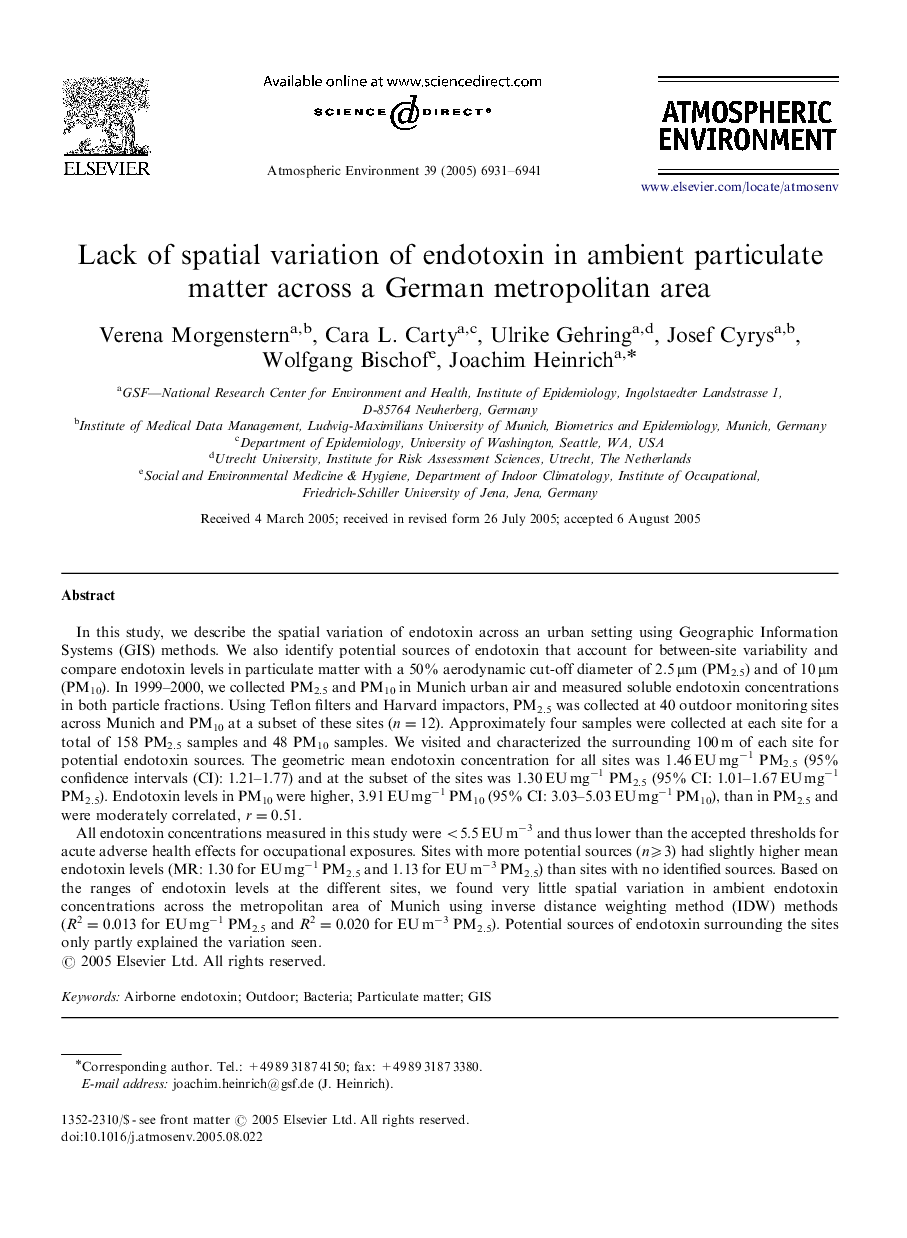| Article ID | Journal | Published Year | Pages | File Type |
|---|---|---|---|---|
| 4445152 | Atmospheric Environment | 2005 | 11 Pages |
In this study, we describe the spatial variation of endotoxin across an urban setting using Geographic Information Systems (GIS) methods. We also identify potential sources of endotoxin that account for between-site variability and compare endotoxin levels in particulate matter with a 50% aerodynamic cut-off diameter of 2.5 μm (PM2.5) and of 10 μm (PM10). In 1999–2000, we collected PM2.5 and PM10 in Munich urban air and measured soluble endotoxin concentrations in both particle fractions. Using Teflon filters and Harvard impactors, PM2.5 was collected at 40 outdoor monitoring sites across Munich and PM10 at a subset of these sites (n=12n=12). Approximately four samples were collected at each site for a total of 158 PM2.5 samples and 48 PM10 samples. We visited and characterized the surrounding 100 m of each site for potential endotoxin sources. The geometric mean endotoxin concentration for all sites was 1.46 EU mg−1 PM2.5 (95% confidence intervals (CI): 1.21–1.77) and at the subset of the sites was 1.30 EU mg−1 PM2.5 (95% CI: 1.01–1.67 EU mg−1 PM2.5). Endotoxin levels in PM10 were higher, 3.91 EU mg−1 PM10 (95% CI: 3.03–5.03 EU mg−1 PM10), than in PM2.5 and were moderately correlated, r=0.51r=0.51.All endotoxin concentrations measured in this study were <5.5 EU m−3 and thus lower than the accepted thresholds for acute adverse health effects for occupational exposures. Sites with more potential sources (n⩾3n⩾3) had slightly higher mean endotoxin levels (MR: 1.30 for EU mg−1 PM2.5 and 1.13 for EU m−3 PM2.5) than sites with no identified sources. Based on the ranges of endotoxin levels at the different sites, we found very little spatial variation in ambient endotoxin concentrations across the metropolitan area of Munich using inverse distance weighting method (IDW) methods (R2=0.013R2=0.013 for EU mg−1 PM2.5 and R2=0.020R2=0.020 for EU m−3 PM2.5). Potential sources of endotoxin surrounding the sites only partly explained the variation seen.
